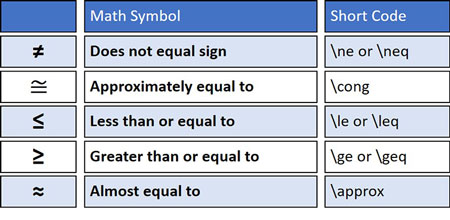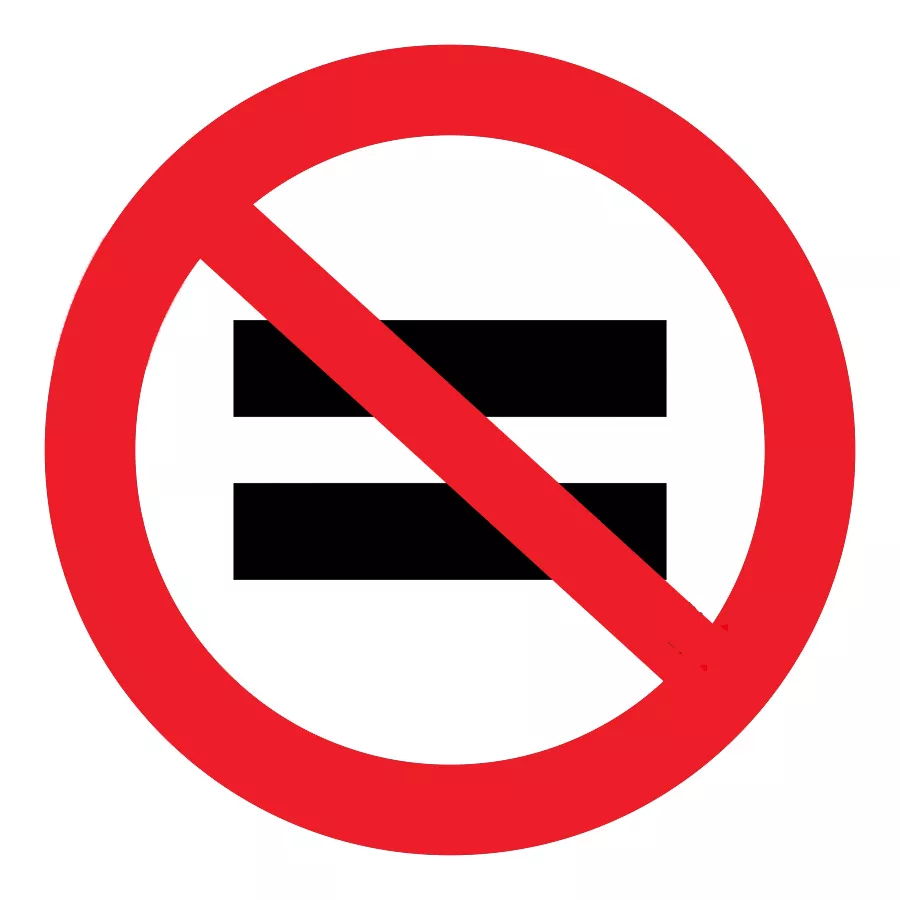

The problem with changing the outer one is that you might have intended to make a new variable, and instead change the existing one that you might not even know about, introducing bugs.

x = 5 - does this create a new local x, or does it change the outer one?. X = 3 - more code, you might have even forgotten about variable x by now. Lua functions actually return separate values, instead of a single container. > t = ) is that if the function returns nils, since nil in tables is considered "no value",, the # operator can't be reliably used to get the number of values because it's undefined if an array has "holes". This can be performed also on the Lua demo. We can use the Lua interactive command-line prompt as a calculator by prefixing an expression by =. When your numbers are integers (with no fractional part), and they don't reach 2^53 then you won't need to worry about these issues.
#DOES NOT EQUAL SIGN LUA CODE#
Remember to write your code in such a way that rounding errors don't build up over time. You don't use the = operator with fractional numbers since it checks for perfect equality. Numbers which have infinitely repeating patterns in decimal will not have them in binary, so don't assume that any fractional number is safe. If you use numbers with fractional parts (or division), they may have a rounding error. Our version of Lua now understands integers in a smart manner. You'll find that pasting x=30/3 y=math.floor(x) print(x, y) into and running it will give "10.0đ0", but trying that with Scribunto in Wikipedia gives "10đ0" instead. Therefore, the programmer may choose to mostly ignore the difference between integers and floats or to assume complete control over the representation of each number." Lua has explicit rules about when each representation is used, but it also converts between them automatically as needed (see §3.4.3).
#DOES NOT EQUAL SIGN LUA MANUAL#
The Lua 5.3 manual however says that "The type number uses two internal representations or two subtypes, one called integer and the other called float. (It is easy to build Lua interpreters that use other internal representations for numbers, such as single-precision float or long integers see the file luaconf.h.)" The Lua 5.1 manual says that "Number represents real (double-precision floating-point) numbers. However, Lua could be recompiled to support single-precision floating-point numbers should you so desire.Īctually, Lua can also support numbers stored as integers, and this may change between implementations and versions. By default, these are double-precision floating-point numbers. Lua supports only one type of number: floating-point number.


 0 kommentar(er)
0 kommentar(er)
